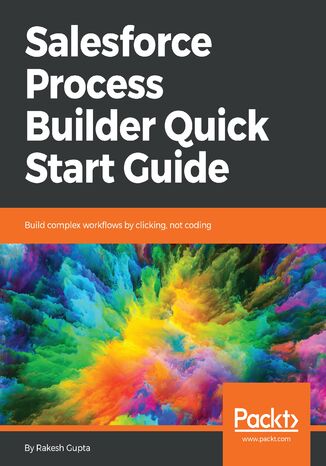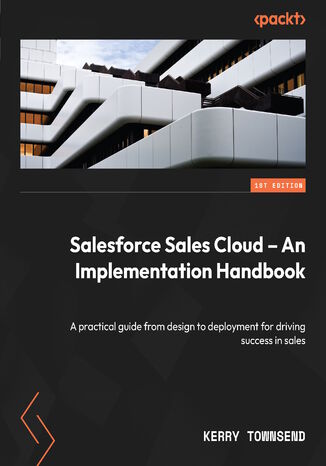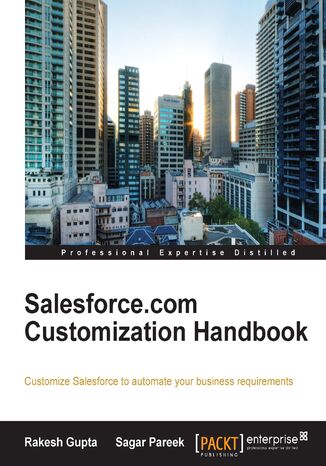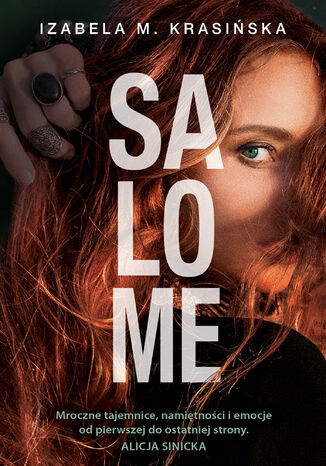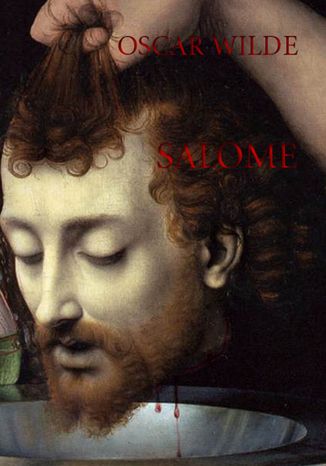Категорії
Електронні книги
-
Бізнес та економіка
- Біткойн
- Ділова жінка
- Коучинг
- Контроль
- Електронний бізнес
- Економіка
- Фінанси
- Фондова біржа та інвестиції
- Особисті компетенції
- Комп'ютер в офісі
- Комунікація та переговори
- Малий бізнес
- Маркетинг
- Мотивація
- Мультимедійне навчання
- Нерухомість
- Переконання та НЛП
- Податки
- Соціальна політика
- Порадники
- Презентації
- Лідерство
- Зв'язки з громадськістю
- Звіти, аналізи
- Секрет
- Соціальні засоби комунікації
- Продаж
- Стартап
- Ваша кар'єра
- Управління
- Управління проектами
- Людські ресурси (HR)
-
Для дітей
-
Для молоді
-
Освіта
-
Енциклопедії, словники
-
Електронна преса
- Architektura i wnętrza
- Безпека життєдіяльності
- Biznes i Ekonomia
- Будинок та сад
- Електронний бізнес
- Ekonomia i finanse
- Езотерика
- Фінанси
- Особисті фінанси
- Бізнес
- Фотографія
- Інформатика
- Відділ кадрів та оплата праці
- Для жінок
- Комп'ютери, Excel
- Бухгалтерія
- Культура та література
- Наукові та академічні
- Охорона навколишнього середовища
- Впливові
- Освіта
- Податки
- Подорожі
- Психологія
- Релігія
- Сільське господарство
- Ринок книг і преси
- Транспорт та спедиція
- Здоров'я та краса
-
Історія
-
Інформатика
- Офісні застосунки
- Бази даних
- Біоінформатика
- Бізнес ІТ
- CAD/CAM
- Digital Lifestyle
- DTP
- Електроніка
- Цифрова фотографія
- Комп'ютерна графіка
- Ігри
- Хакування
- Hardware
- IT w ekonomii
- Наукові пакети
- Шкільні підручники
- Основи комп'ютера
- Програмування
- Мобільне програмування
- Інтернет-сервери
- Комп'ютерні мережі
- Стартап
- Операційні системи
- Штучний інтелект
- Технологія для дітей
- Вебмайстерність
-
Інше
-
Іноземні мови
-
Культура та мистецтво
-
Шкільні читанки
-
Література
- Антології
- Балада
- Біографії та автобіографії
- Для дорослих
- Драми
- Журнали, щоденники, листи
- Епос, епопея
- Нарис
- Наукова фантастика та фантастика
- Фельєтони
- Художня література
- Гумор, сатира
- Інше
- Класичний
- Кримінальний роман
- Нехудожня література
- Художня література
- Mity i legendy
- Лауреати Нобелівської премії
- Новели
- Побутовий роман
- Okultyzm i magia
- Оповідання
- Спогади
- Подорожі
- Оповідна поезія
- Поезія
- Політика
- Науково-популярна
- Роман
- Історичний роман
- Проза
- Пригодницька
- Журналістика
- Роман-репортаж
- Romans i literatura obyczajowa
- Сенсація
- Трилер, жах
- Інтерв'ю та спогади
-
Природничі науки
-
Соціальні науки
-
Шкільні підручники
-
Науково-популярна та академічна
- Археологія
- Bibliotekoznawstwo
- Кінознавство / Теорія кіно
- Філологія
- Польська філологія
- Філософія
- Finanse i bankowość
- Географія
- Економіка
- Торгівля. Світова економіка
- Історія та археологія
- Історія мистецтва і архітектури
- Культурологія
- Мовознавство
- літературні студії
- Логістика
- Математика
- Ліки
- Гуманітарні науки
- Педагогіка
- Навчальні засоби
- Науково-популярна
- Інше
- Психологія
- Соціологія
- Театральні студії
- Богослов’я
- Економічні теорії та науки
- Transport i spedycja
- Фізичне виховання
- Zarządzanie i marketing
-
Порадники
-
Ігрові посібники
-
Професійні та спеціальні порадники
-
Юридична
- Безпека життєдіяльності
- Історія
- Дорожній кодекс. Водійські права
- Юридичні науки
- Охорона здоров'я
- Загальне, компендіум
- Академічні підручники
- Інше
- Закон про будівництво і житло
- Цивільне право
- Фінансове право
- Господарське право
- Господарське та комерційне право
- Кримінальний закон
- Кримінальне право. Кримінальні злочини. Кримінологія
- Міжнародне право
- Міжнародне та іноземне право
- Закон про охорону здоров'я
- Закон про освіту
- Податкове право
- Трудове право та законодавство про соціальне забезпечення
- Громадське, конституційне та адміністративне право
- Кодекс про шлюб і сім'ю
- Аграрне право
- Соціальне право, трудове право
- Законодавство Євросоюзу
- Промисловість
- Сільське господарство та захист навколишнього середовища
- Словники та енциклопедії
- Державні закупівлі
- Управління
-
Путівники та подорожі
- Африка
- Альбоми
- Південна Америка
- Центральна та Північна Америка
- Австралія, Нова Зеландія, Океанія
- Австрія
- Азії
- Балкани
- Близький Схід
- Болгарія
- Китай
- Хорватія
- Чеська Республіка
- Данія
- Єгипет
- Естонія
- Європа
- Франція
- Гори
- Греція
- Іспанія
- Нідерланди
- Ісландія
- Литва
- Латвія
- Mapy, Plany miast, Atlasy
- Мініпутівники
- Німеччина
- Норвегія
- Активні подорожі
- Польща
- Португалія
- Інше
- Przewodniki po hotelach i restauracjach
- Росія
- Румунія
- Словаччина
- Словенія
- Швейцарія
- Швеція
- Світ
- Туреччина
- Україна
- Угорщина
- Велика Британія
- Італія
-
Психологія
- Філософія життя
- Kompetencje psychospołeczne
- Міжособистісне спілкування
- Mindfulness
- Загальне
- Переконання та НЛП
- Академічна психологія
- Психологія душі та розуму
- Психологія праці
- Relacje i związki
- Батьківство та дитяча психологія
- Вирішення проблем
- Інтелектуальний розвиток
- Секрет
- Сексуальність
- Спокушання
- Зовнішній вигляд та імідж
- Філософія життя
-
Релігія
-
Спорт, фітнес, дієти
-
Техніка і механіка
Аудіокниги
-
Бізнес та економіка
- Біткойн
- Ділова жінка
- Коучинг
- Контроль
- Електронний бізнес
- Економіка
- Фінанси
- Фондова біржа та інвестиції
- Особисті компетенції
- Комунікація та переговори
- Малий бізнес
- Маркетинг
- Мотивація
- Нерухомість
- Переконання та НЛП
- Податки
- Соціальна політика
- Порадники
- Презентації
- Лідерство
- Зв'язки з громадськістю
- Секрет
- Соціальні засоби комунікації
- Продаж
- Стартап
- Ваша кар'єра
- Управління
- Управління проектами
- Людські ресурси (HR)
-
Для дітей
-
Для молоді
-
Освіта
-
Енциклопедії, словники
-
Електронна преса
-
Історія
-
Інформатика
-
Інше
-
Іноземні мови
-
Культура та мистецтво
-
Шкільні читанки
-
Література
- Антології
- Балада
- Біографії та автобіографії
- Для дорослих
- Драми
- Журнали, щоденники, листи
- Епос, епопея
- Нарис
- Наукова фантастика та фантастика
- Фельєтони
- Художня література
- Гумор, сатира
- Інше
- Класичний
- Кримінальний роман
- Нехудожня література
- Художня література
- Mity i legendy
- Лауреати Нобелівської премії
- Новели
- Побутовий роман
- Okultyzm i magia
- Оповідання
- Спогади
- Подорожі
- Поезія
- Політика
- Науково-популярна
- Роман
- Історичний роман
- Проза
- Пригодницька
- Журналістика
- Роман-репортаж
- Romans i literatura obyczajowa
- Сенсація
- Трилер, жах
- Інтерв'ю та спогади
-
Природничі науки
-
Соціальні науки
-
Науково-популярна та академічна
-
Порадники
-
Професійні та спеціальні порадники
-
Юридична
-
Путівники та подорожі
-
Психологія
- Філософія життя
- Міжособистісне спілкування
- Mindfulness
- Загальне
- Переконання та НЛП
- Академічна психологія
- Психологія душі та розуму
- Психологія праці
- Relacje i związki
- Батьківство та дитяча психологія
- Вирішення проблем
- Інтелектуальний розвиток
- Секрет
- Сексуальність
- Спокушання
- Зовнішній вигляд та імідж
- Філософія життя
-
Релігія
-
Спорт, фітнес, дієти
-
Техніка і механіка
Відеокурси
-
Бази даних
-
Big Data
-
Biznes, ekonomia i marketing
-
Кібербезпека
-
Data Science
-
DevOps
-
Для дітей
-
Електроніка
-
Графіка / Відео / CAX
-
Ігри
-
Microsoft Office
-
Інструменти розробки
-
Програмування
-
Особистісний розвиток
-
Комп'ютерні мережі
-
Операційні системи
-
Тестування програмного забезпечення
-
Мобільні пристрої
-
UX/UI
-
Веброзробка, Web development
-
Управління
Подкасти
Salesforce Process Builder Quick Start Guide. Build complex workflows by clicking, not coding
Salesforce Management System is an information system used in CRM to automate business processes, such as sales and marketing. Process Builder is a visual tool created to automate business processes in Salesforce. It enables users with no coding expertise to build complex Salesforce workflows.The book starts with an introduction to Process Builder, focussing on the building blocks of creating Processes. Then you will learn about different applications of Process Builder for developing streamlined solutions. You will learn how to easily automate business processes and tackle complex business scenarios using Processes. The book explains the workings of the Process Builder so that you can create reusable processes. It also explains how you can migrate existing Workflow Rules to Process Builder.By the end of the book, you will have a clear understanding of how to use Flows and Process Builder to optimize code usage.
Salesforce Sales Cloud is a system rich in functionality, addressing many sales business challenges such as sales productivity, forecast visibility, and sales enablement. However, unlocking the full value of the system and getting maximum returns pose a challenge, especially if you’re new to the technology.This implementation handbook goes beyond mere configuration to ensure a successful implementation journey. From laying the groundwork for your project to engaging stakeholders with sales-specific business insights, this book equips you with the knowledge you need to plan and execute.As you progress, you’ll learn how to design a robust data model to support the sales and lead generation process, followed by crafting an intuitive user experience to drive productivity. You’ll then explore crucial post-building aspects such as testing, training, and releasing functionality. Finally, you’ll discover how the solutions’ capability can be expanded by adding and integrating other tools to address typical sales use cases.By the end of this book, you’ll have grasped how to leverage Sales Cloud to solve sales challenges and have gained the confidence to design and implement solutions successfully with the help of real-world use cases.
Sally's Phone - With Audio Starter Level Oxford Bookworms Library
A Starter level Oxford Bookworms Library graded reader. This version includes an audio book: listen to the story as you read. Written for Learners of English by Christine Lindop. Sally is always running - and she has her phone with her all the time: at home, on the train, at work, at lunchtime, and at the shops. But then one afternoon suddenly she has a different phone . . . and it changes her life.
Sally's Phone Starter Level Oxford Bookworms Library
A Starter level Oxford Bookworms Library graded reader. Written for Learners of English by Christine Lindop. Sally is always running - and she has her phone with her all the time: at home, on the train, at work, at lunchtime, and at the shops. But then one afternoon suddenly she has a different phone ... and it changes her life.
Pełna namiętności powieść z elementami thrillera psychologicznego Pięć lat temu Dorota i Przemek przeżyli tragedię, która odmieniła ich życie. Dzisiaj małżonków łączą jedynie wzajemny żal, pusty dom i dogasająca miłość, po której zostały tylko smutne wspomnienia Kiedy na horyzoncie pojawia się Sandra, fascynująca studentka polonistyki, profesor traci dla niej głowę. Dziewczyna przypomina mu biblijną Salome i tak jak ona rozpala zmysły. Tymczasem Dorota próbuje odzyskać miłość męża. Przemek rozdarty między powinnością a namiętnością staje przed wyborem, którego konsekwencje zaważą na całym jego życiu. To nie jest banalny romans, lecz Zbrodnia, której nie można wybaczyć. Kara, którą należy wymierzyć. Zemsta, która kiełkuje latami.
Jan Kasprowicz Hymny Salome O przyjdź! O boski przyjdź proroku! Salome ciebie woła z płomieniami w oku! Na tę słoneczną miłości polanę, pomiędzy żądz rozkwitłe czarodziejskie zioła Salome cię woła! O przyjdź! Salome, kłęby włosów rozwiawszy miedziane, niby wieków pożaru krwawiące się łuny, w złocistej harfy uderzyła struny i śpiewa O przyjdź! O przyjdź, proroku blady! Ogień żywy obleje twe liliowe skronie, ogień żywy na licuć przygasłym zapłonie od mych gorących warg... Jan Kasprowicz Ur. 12 grudnia 1860 r. w Szymborzu pod Inowrocławiem Zm. 1 sierpnia 1926 r. w Poroninie na Harendzie (dziś Zakopane) Najważniejsze dzieła: Z chałupy (1888); Miłość (1895); Krzak dzikiej róży (1898); Ginącemu światu (1902); Księga ubogich (1916); Hymny (1921) Poeta, dramaturg, krytyk, tłumacz, publicysta epoki Młodej Polski. Pomimo, że był synem chłopskim, udało mu się zdobyć wyższe wykształcenie, a nawet w 1904 r. doktoryzował się na Uniwersytecie Lwowskim na podstawie rozprawy Liryka Teofila Lenartowicza. W 1909 r. na tym samym uniwersytecie objął, specjalnie dla niego utworzoną, katedrę literatury porównawczej. Biegle władał łaciną, greką, angielskim i francuskim przekładał dzieła m.in. Ajschylosa, Eurypidesa, Shakespeare'a. W działalności Jana Kasprowicza wyróżnić można etapy, które charakteryzowały się fascynacją określonymi kierunkami poetyckimi. Początkowo w jego twórczości dominował realizm i naturalizm, później impresjonizm i symbolizm. Kolejny okres cechował ekspresjonizm, a ostatni to przejście do postawy franciszkańskiej. autor: Izabela Miecznikowska Kupując książkę wspierasz fundację Nowoczesna Polska, która propaguje ideę wolnej kultury. Wolne Lektury to biblioteka internetowa, rozwijana pod patronatem Ministerstwa Edukacji Narodowej. W jej zbiorach znajduje się kilka tysięcy utworów, w tym wiele lektur szkolnych zalecanych do użytku przez MEN, które trafiły już do domeny publicznej. Wszystkie dzieła są odpowiednio opracowane - opatrzone przypisami oraz motywami.
Sztuka "Salome" Oscara Wilde'a została wydana w Paryżu w roku 1891. Najbardziej znanym polskim przekładem tego utworu jest tłumaczenie Leona Choromańskiego i Janiny Kruczyńskiej. Obecnie wydany przekład jest niemal nieznany i stąd może być interesujący zarówno dla miłośników twórczości Wilde'a jak i dla tekstologów, komparatystów i badaczy przekładów literackich. "Salome" bowiem to po dziś dzień również i jedna z najwybitniejszych, najchętniej wystawianych na scenach całego świata oper XX wieku. Tekst Wilde'a bowiem został wykorzystany przez Richarda Straussa do skomponowania dramatu operowego pod tym samym tytułem. przełożył Jakub Bylczyński do wydania przygotował Maciej Dęboróg-Bylczyński
Salomon i Sulamitka SULAMITKA Twe oczy jak pochodnie gorą, od których noc się rozpłomienia. SALOMON Wśród rzęs twe oko jak jezioro, które nadwodny gaj ocienia. SULAMITKA Twe usta są jak wiśni grona purpurą malowane ciemną. SALOMON Ust twoich róża rozchylona motyle nęci ponade mną. SULAMITKA Pierś twa jak brama, kędy woje wroga łoskotem trwożą stali. SALOMON Jak dwa gołębie piersi twoje, co na śnieżystej siedzą hali. SULAMITKA Twe słowa jak najsłodsze miody, jako szum cedrów twoja mowa. SALOMON Jak dźwięczny szelest górskiej wody, jak zapach mirry twoje słowa. SULAMITKA Jak płomień podczas nocy mroźnej tyś pożądany mnie i drogi. [...]Kazimierz Przerwa-Tetmajer Ur. 12 lutego 1865 w Ludźmierzu Zm. 18 stycznia 1940 w Warszawie Najważniejsze dzieła: Na Skalnym Podhalu (1910), Legenda Tatr (1912); wiersze: Eviva l'arte; Hymn do Nirwany; Koniec wieku XIX; Prometeusz; Lubię, kiedy kobieta; Widok ze Świnicy do Doliny Wierchcichej; Pieśń o Jaśku zbójniku; List Hanusi. Poeta, jeden z czołowych przedstawicieli polskiego modernizmu (Młodej Polski); spośród jego obfitej twórczości poetyckiej najistotniejsze dla historii literatury pozostają wiersze z drugiej (1894), trzeciej (1898) i czwartej (1900) serii Poezji, oddające ducha dziewiętnastowiecznego dekadentyzmu, pesymizmu egzystencjalnego, a także fascynacji myślą Schopenhauera i Nietzschego oraz mitologią i filozofią indyjską, które właściwe było pokoleniu Tetmajera, szczególnie młodopolskiej bohemie. Tetmajer zasłynął ponadto jako autor śmiałych erotyków, a także piewca górskiej przyrody Tatr i popularyzator folkloru podhalańskiego; pisał również dramaty (Zawisza Czarny, Rewolucja, Judasz), nowele i powieści (Ksiądz Piotr; Na Skalnym Podhalu; Legenda Tatr; Z wielkiego domu; Panna Mery). Był przyrodnim bratem Włodzimierza Tetmajera, stanowił prototyp postaci Poety z Wesela Wyspiańskiego. Jego ojciec, Adolf Tetmajer, brał udział w powstaniu listopadowym i styczniowym; matka, Julia Grabowska, należała do tzw. koła entuzjastek, literatek skupionych wokół Narcyzy Żmichowskiej. Podczas studiów na Wydziale Filozoficznym Uniwersytetu Jagiellońskiego (1884-1886) zaprzyjaźnił się z Lucjanem Rydlem, Stanisławem Estreicherem i Ferdynandem Hoesickiem. Zajmował się twórczością poetycką i pracą dziennikarską w "Kurierze Polskim" (współredaktor 1989--93), "Tygodniku Ilustrowanym", "Kurierze Warszawskim" i krakowskim "Czasie". Przez wiele lat pełnił funkcję sekretarza Adama Krasińskiego (wnuka Zygmunta, zajmującego się wydawaniem spuścizny autora Nie-Boskiej komedii) i w tej roli przebywał w Heidelbergu (1895). W czasie I wojny światowej był związany z legionami Piłsudskiego (redagował pismo "Praca Narodowa"); po wojnie wdał się w spór polsko-czechosłowacki o linię graniczną w Tatrach, był organizatorem Komitetu Obrony Spisza, Orawy i Podhala oraz prezesem Komitetu Obrony Kresów Południowych. W 1921 został prezesem Towarzystwa Literatów i Dziennikarzy Polskich, a w 1934 członkiem honorowym Polskiej Akademii Literatury. Drugą połowę życia poety naznaczyła choroba. Powikłania wywołane kiłą doprowadziły najpierw do zaburzeń psychicznych (które ujawniły się już podczas obchodów 25-lecia jego twórczości w 1912 r.), a w późniejszym czasie do utraty wzroku. Pod koniec życia Tetmajer egzystował dzięki ofiarności społecznej, umożliwiono mu mieszkanie w Hotelu Europejskim w Warszawie, skąd został eksmitowany w styczniu 1940 r. przez okupacyjne władze niemieckie. Zmarł w Szpitalu Dzieciątka Jezus z powodu nowotworu przysadki mózgowej oraz niewydolności krążenia. Jest pochowany na Cmentarzu Zasłużonych w Zakopanem; na warszawskich Powązkach znajduje się jego symboliczny grób. Przeczytaj artykuł o autorze w Wikipedii Kupując książkę wspierasz fundację Nowoczesna Polska, która propaguje ideę wolnej kultury. Wolne Lektury to biblioteka internetowa, rozwijana pod patronatem Ministerstwa Edukacji Narodowej. W jej zbiorach znajduje się kilka tysięcy utworów, w tym wiele lektur szkolnych zalecanych do użytku przez MEN, które trafiły już do domeny publicznej. Wszystkie dzieła są odpowiednio opracowane - opatrzone przypisami oraz motywami.
Salomon Święta pieśń miłości. Skarby Jego miłości
"Salomon" Święta pieśń miłości" to kolejna powieść z serii "Skarby Jego miłości" Autorka kunsztownie wplata wersy z „Pieśni nad pieśniami” w tę poruszającą powieść o sile miłości.
Romans kryminalny autorstwa Stanisława Antoniego Wotowskiego z 1932 roku. Miłość krzyżuje się w nim ze zbrodnią, a namiętność z nienawiścią... "Po chwili już sunęli wśród różnobarwnych par, na środku sali. A Peggy, w swej zielonej, harmonizującej ze złotem włosów, wieczornej sukience i srebrnych pantofelkach, była tak efektowna i ładna, że niejedne z zachwytem odwracały się za nią oczy. Spostrzegł to Dżordżo i coś go tknęło w serce. Postanowił wykorzystać sam na sam z kuzynką, bo w domu stale ktoś im asystował, i nieco posunąć naprzód swoje sprawy. Czyż wiecznie miał dla niej pozostać tylko nic nie znaczącym adiutantem, którego się toleruje, jako miłego towarzysza na przechadzce, lub dancingu? Tu zbiegały się jego myśli z ojcowskimi myślami, choć znajdowali się jeden od drugiego daleko. - Jak ładnie tańczy kuzynka! - rozpoczął ofensywę. Posłyszał srebrzysty śmiech w odpowiedzi. - Tak! - wymówiła cicho. - Dwa miesiące... Zaległa między nimi jakaś pełna niedomówień cisza... Rena nie patrzyła na Ordeckiego, on zaś niby wahał się, czy ma wyrzucić z siebie to, co mu ciążyło na sercu. Wreszcie nie wytrzymał..."
Salon baronowej Wiery. Powieść sensacyjna
Salon baronowej Wiery: Romans kryminalny pełen namiętności i tajemnic. W świetle balowych świateł, wśród wiru tańczących par, rozgrywa się drama namiętności i zbrodni. Powieść sensacyjna Stanisława Antoniego Wotowskiego "Salon baronowej Wiery" to wciągająca historia, w której miłość miesza się z morderstwem, a namiętność z nienawiścią. Peggy, piękna i tajemnicza kobieta, oczarowuje wszystkich wokół. Dżordżo, zafascynowany nią od dawna, pragnie wyrwać się z roli adiutanta i zdobyć jej serce. Czy uda mu się przełamać bariery i zbliżyć do Peggy? W tle tej burzliwej historii rozgrywa się mroczna tajemnica. Seria dziwnych zdarzeń i morderstw sieje strach wśród gości salonu baronowej Wiery. Dżordżo, chcąc chronić Peggy i odkryć prawdę, staje się mimowolnym detektywem. "Salon baronowej Wiery" to nie tylko wciągająca historia miłosna, ale również trzymający w napięciu kryminał. Autor, Stanisław Antoni Wotowski, mistrzowsko buduje atmosferę tajemnicy i grozy, prowadząc czytelnika przez labirynt intryg i zbrodni. Wotowski, znany pisarz i prywatny detektyw, czerpał inspirację ze swojego bogatego doświadczenia. W swoich powieściach łączył elementy kryminału, romansu i okultyzmu, tworząc niepowtarzalny klimat. "Salon baronowej Wiery" to książka dla wszystkich miłośników wciągających historii, gdzie namiętność miesza się z zbrodnią, a prawda skrywa się za fasadą pozorów. Zamów już dziś i zanurz się w świecie tajemnic i uniesień!
Wigilia. Salon kosmetyczny w centrum handlowym. Tego dnia otwarty jest dłużej ze względu na zatrzęsienie klientów. Każda kobieta chce dopieścić fryzurę i paznokcie. Nagle w wejściu zakładu opada ciężka krata, a wszyscy będący w środku zostają uwięzieni. Telefony nie działają, centrum handlowe jest zamknięte, a ochrona najwyraźniej już zaczęła świętować, bo nikt nie odpowiada na wołania o pomoc. Atmosfera gęstnieje, a z czasem staje się trudna do zniesienia, bo wychodzi na jaw, że poszczególne osoby coś jednak o sobie wiedzą, a wszystkich uwięzionych, bez wyjątku, zna jedna z klientek salonu Melania. Przypadek? Wątpliwe, ponieważ okazuje się, że do każdego z obecnych ma o coś pretensje. W szafie na zapleczu natomiast jakżeby inaczej zostaje znaleziony trup. Czy magia świąt Bożego Narodzenia zadziała? Przecież wszyscy tak na nią zawsze czekają
Początkowo nic albo bardzo niewiele łączy głównych bohaterów Salonowego życia: Dorotę, właścicielkę gabinetu kosmetycznego, Gabrielę, zakompleksioną matkę i żonę, oraz Leona, genialnego chemika i badacza perzu. Dorota ma młodość, przyjaciół i znajomych, ale tęskni za własną rodziną, Gabriela całkiem odwrotnie, natomiast Leon jest typowym pustelnikiem, tyle że współczesnym. Mają swoje plany i cele, ale żyją w miarę spokojnie, przynajmniej do czasu, gdy wynalazek Leona, oddany w ręce Doroty, narobi sporo zamieszania i zapoczątkuje serię koszmarnych wydarzeń. Horror w salonie kosmetycznym? Czemu nie, jeżeli potraktowany z ciepłym humorem, niepozbawiony wnikliwej obserwacji nie tylko salonowych bywalców. Irena Matuszkiewicz z wykształcenia filolog, przez wiele lat dziennikarka, obecnie popularna autorka powieści obyczajowych. Debiutowała Agencją złamanych serc, następnie wydała: Gry nie tylko miłosne, Dziewczyny do wynajęcia, Salonowe życie, Przeklęte, zaklęte, Przebudzenie, Szepty i Modliszkę. W swoich powieściach trafnie ukazuje polską współczesność, nierzadko jednak sięga głęboko w przeszłość w życie matek i babek swoich bohaterek.
Warszawska rodzina Rudyckich cieszyła się dobrą opinią. Bogobojni i prawi ludzie wychowali dwie córki, które wyszły za mąż i kontynuowały tradycję dbania o domowe ognisko. Dopiero najmłodszy syn Józek przysporzył rodzinie niemało problemów. Bystry i wyjątkowo przystojny chłopak szybko nauczył się zjednywać sobie ludzi i wykorzystywać swoje atuty. Jednocześnie pociągało go wielkomiejskie życie. Wybierając hulaszczy tryb życia potrzebował coraz większych nakładów finansowych. Przez to przyjmował intratne, ale coraz mniej moralne stanowiska. Dokąd zaprowadzi go nieustanna chęć zabawy? Opowiadanie kryminalne oparte na faktach. Wieloletni nadkomisarz Policji Śledczej Ludwik Kurnatowski dzieli się z czytelnikami wspomnieniami z pracy. Zdradza, jakimi prawami rządził się ówczesny świat kryminalny i kim byli jego przedstawiciele. Język, postacie i poglądy zawarte w tej publikacji nie odzwierciedlają poglądów ani opinii wydawcy. Utwór ma charakter publikacji historycznej, ukazującej postawy i tendencje charakterystyczne dla czasów, z których pochodzi.

